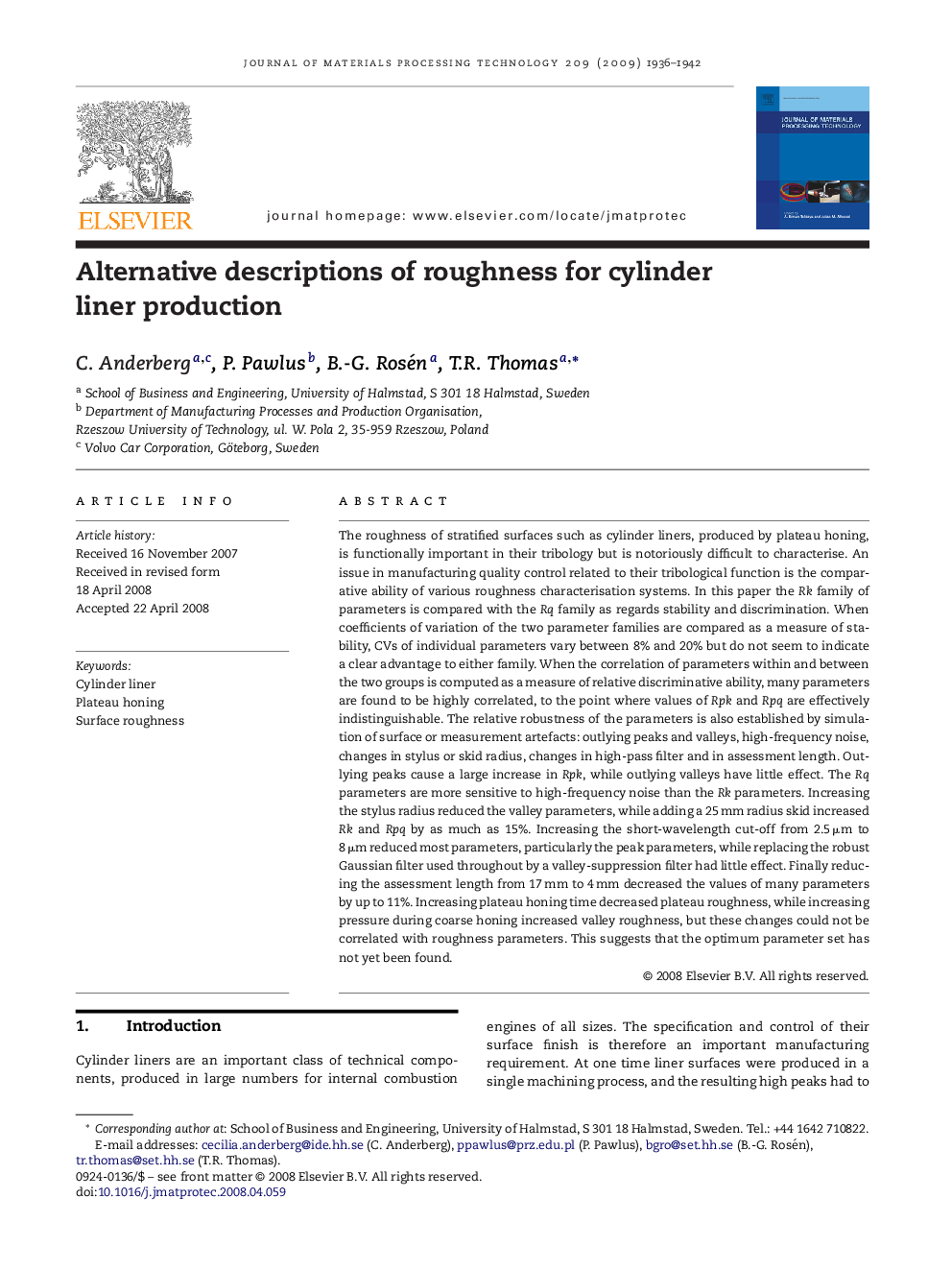| کد مقاله | کد نشریه | سال انتشار | مقاله انگلیسی | نسخه تمام متن |
|---|---|---|---|---|
| 798581 | 903281 | 2009 | 7 صفحه PDF | دانلود رایگان |

The roughness of stratified surfaces such as cylinder liners, produced by plateau honing, is functionally important in their tribology but is notoriously difficult to characterise. An issue in manufacturing quality control related to their tribological function is the comparative ability of various roughness characterisation systems. In this paper the Rk family of parameters is compared with the Rq family as regards stability and discrimination. When coefficients of variation of the two parameter families are compared as a measure of stability, CVs of individual parameters vary between 8% and 20% but do not seem to indicate a clear advantage to either family. When the correlation of parameters within and between the two groups is computed as a measure of relative discriminative ability, many parameters are found to be highly correlated, to the point where values of Rpk and Rpq are effectively indistinguishable. The relative robustness of the parameters is also established by simulation of surface or measurement artefacts: outlying peaks and valleys, high-frequency noise, changes in stylus or skid radius, changes in high-pass filter and in assessment length. Outlying peaks cause a large increase in Rpk, while outlying valleys have little effect. The Rq parameters are more sensitive to high-frequency noise than the Rk parameters. Increasing the stylus radius reduced the valley parameters, while adding a 25 mm radius skid increased Rk and Rpq by as much as 15%. Increasing the short-wavelength cut-off from 2.5 μm to 8 μm reduced most parameters, particularly the peak parameters, while replacing the robust Gaussian filter used throughout by a valley-suppression filter had little effect. Finally reducing the assessment length from 17 mm to 4 mm decreased the values of many parameters by up to 11%. Increasing plateau honing time decreased plateau roughness, while increasing pressure during coarse honing increased valley roughness, but these changes could not be correlated with roughness parameters. This suggests that the optimum parameter set has not yet been found.
Journal: Journal of Materials Processing Technology - Volume 209, Issue 4, 19 February 2009, Pages 1936–1942